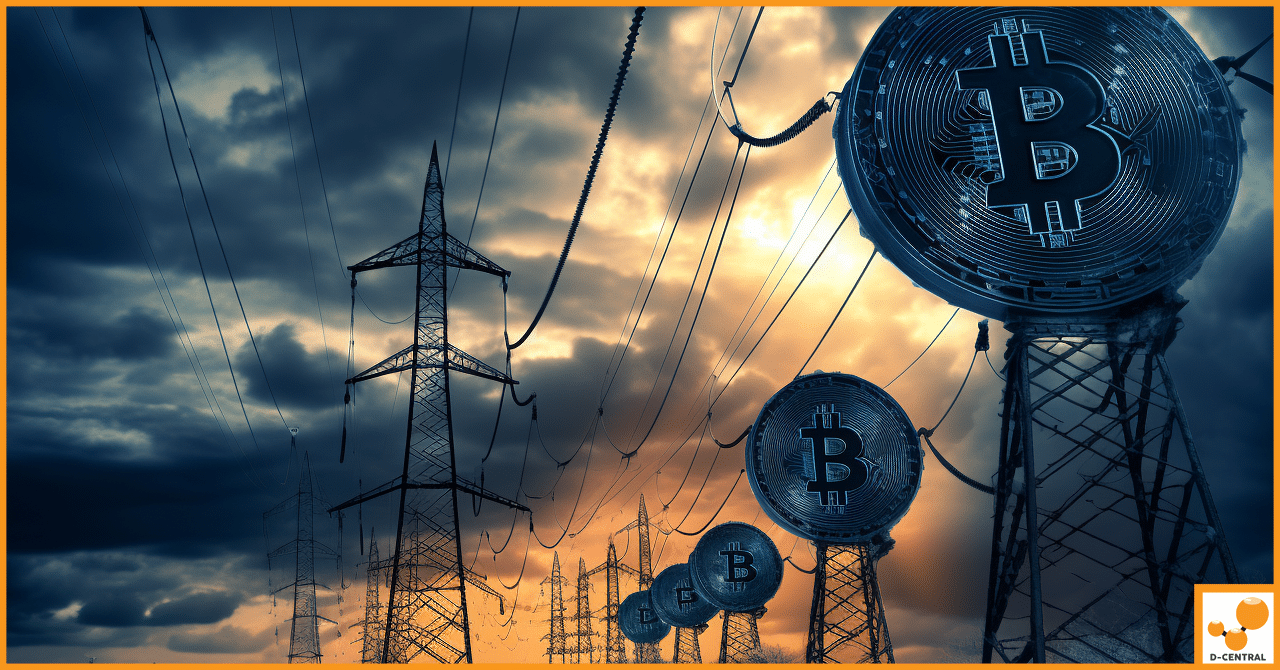
Warranty and Repair Service Policies for Antminers: What You Need to Know
In the dynamic world of cryptocurrency mining, Antminer users face the critical task of maintaining their mining hardware to ensure
4479 Desserte Nord Autoroute 440, Laval, QC H7P 6E2

As winter approaches, the challenges it poses to national power grids become a topic of increasing concern. The season’s shorter daylight hours and reduced solar generation capacity, coupled with the heightened demand for electricity to heat homes, create a perfect storm for grid instability. Independent Service Operators (ISOs) like ERCOT often find themselves stretched thin, struggling to balance supply and demand while ensuring grid resilience.
However, an unlikely hero emerges in this scenario—Bitcoin mining. Far from being just a mechanism for creating digital currency, Bitcoin mining offers innovative solutions to these seasonal challenges, serving as a flexible load resource that can stabilize the grid. In doing so, it transcends its primary function and becomes a matter of national defence, safeguarding the very infrastructure that keeps our society running.
In the following sections, we will delve deeper into the intricacies of the relationship between Bitcoin mining and grid resilience, exploring how this decentralized technology could be the key to a more stable, secure future.
Winter is not just a season of snowflakes and cozy fireplaces; it’s a season that puts national power grids, including Canada’s, to the test. With shorter daylight hours, the northern hemisphere—and particularly regions like Quebec—experience a significant reduction in solar energy generation. This is compounded by colder temperatures that increase the demand for electricity to heat homes and businesses. The result is a grid that is under immense pressure to deliver.
Independent Service Operators (ISOs) like ERCOT in the U.S. and Hydro-Québec in Canada bear the brunt of this seasonal challenge. Tasked with balancing electricity supply and demand, these organizations face a Herculean task during the winter months. The strain is not just operational but also financial, as the costs of emergency measures and backup power generation can skyrocket. The situation becomes even more precarious when individual power generation and distribution operators are not adequately prepared for winter, leaving the ISOs to pick up the slack.
While winter has always been a challenging season for power grids, climate change adds another layer of complexity to the equation. Extreme weather events, including more frequent and severe snowstorms, can disrupt even the most well-prepared grids. Climate change is not just a future concern; it’s a present-day disruptor that exacerbates the already existing challenges of winter grid management.
While the challenges of winter grid management are daunting, Bitcoin mining emerges as a game-changing solution. By acting as a flexible load on the grid, Bitcoin mining operations can absorb excess energy during times of low demand and release it back during peak hours. This dynamic capability not only stabilizes the grid but also makes it more efficient. In regions like Quebec, where hydroelectric power is abundant, Bitcoin mining can serve as a perfect counterpart to balance the grid’s energy supply and demand.
Bitcoin miners are uniquely positioned to act as the vanguard in grid balancing. Unlike traditional industries that require a long startup and shutdown time, Bitcoin miners can power on and off in a fraction of the time. This rapid response capability is invaluable during winter months when the grid is most vulnerable. Whether it’s ERCOT in Texas or Hydro-Québec in Canada, these organizations can benefit immensely from the agility that Bitcoin mining operations offer.
The benefits of Bitcoin mining extend beyond mere energy balancing. The heat generated by ASICs used in mining can be captured and redistributed for various purposes. In colder climates like Quebec, this heat can be used for residential heating, reducing the overall demand on the grid. It’s a win-win situation: Bitcoin miners get to offset their operational costs, and the community benefits from a more stable and efficient power grid.
One of the most compelling examples of Bitcoin mining’s role in grid resilience occurred in Texas. During a severe winter storm, the state’s power grid was on the brink of collapse. Bitcoin miners, who could quickly power down their operations, did so to reduce the load on the grid. This rapid response helped prevent a complete blackout. It’s a real-world case that underscores the potential of Bitcoin mining as a stabilizing force in grid management.
As technology continues to advance, the role of Bitcoin mining in grid resilience is expected to grow. Smarter load-balancing algorithms could make Bitcoin mining even more effective in stabilizing grids. In regions like Quebec, where renewable energy sources are abundant, integrating Bitcoin mining operations could become a standard practice for the likes of Hydro-Québec to ensure a more resilient and efficient grid.
As we’ve explored throughout this article, the challenges posed by winter to national power grids are both complex and urgent. From the strain on Independent Service Operators like ERCOT and Hydro-Québec to the exacerbating effects of climate change, the need for innovative solutions has never been greater. Enter Bitcoin mining—a technology that not only promises to revolutionize the financial world but also offers a lifeline to our increasingly vulnerable power grids.
Bitcoin mining serves as a flexible load on the grid, capable of absorbing and releasing energy as needed, thereby stabilizing and making the grid more efficient. Its rapid response capabilities make it an ideal candidate for grid balancing, especially during the critical winter months. Furthermore, the heat generated by Bitcoin mining operations can be captured and redistributed, offering additional benefits that go beyond mere energy balancing.
The real-world applications and future possibilities of this technology underscore its potential as a key player in national grid resilience and, by extension, national defense. As we move towards a future where the stability of our power grids becomes increasingly critical, the role of Bitcoin mining as a stabilizing force cannot be overstated.
By embracing the capabilities of Bitcoin mining, we’re not just investing in a technology; we’re investing in a more resilient, secure future for all.
Why is winter a challenging season for national power grids?
Winter poses a challenge to national power grids due to shorter daylight hours that reduce solar energy generation and increase demand for electricity for heating homes and businesses. This results in a considerable strain on the grid.
How does Bitcoin mining help stabilize the grid during winter?
Bitcoin mining serves as a flexible load on the grid, where it can absorb excess energy when the demand is low and release it back during peak hours. This property of Bitcoin mining stabilizes the grid and makes it more efficient.
What is the role of Independent Service Operators (ISOs) like ERCOT and Hydro-Québec in grid management?
Independent Service Operators like ERCOT and Hydro-Québec are responsible for balancing electricity supply and demand. They face the challenging task of ensuring grid resilience, particularly during winter months when the power demand is high and power generation capacity is reduced.
How does Bitcoin mining contribute to grid balancing?
Bitcoin miners can rapidly power on and off their operations, which makes them particularly valuable during winter months when grids are most vulnerable. This ability allows them to act as an effective load balance by adjusting their power consumption based on the grid’s needs.
What are the additional benefits of Bitcoin mining beyond energy balancing?
Beyond merely balancing the grid’s energy, Bitcoin mining also produces heat that can be captured and redistributed for other purposes like residential heating in colder climates. This reduces the overall demand for grid power and contributes further to grid stability.
What are some real-world examples of Bitcoin mining’s role in grid resilience?
During a severe winter storm in Texas, Bitcoin miners reduced their operations’ power consumption, which contributed significantly in preventing a complete blackout. It demonstrates the effectiveness of Bitcoin mining in grid management.
What are D-Central’s services regarding Bitcoin mining?
D-Central offers comprehensive mining support and outsourcing solutions for those interested in contributing to a more resilient power grid and investing in Bitcoin mining technology.
DISCLAIMER: D-Central Technologies and its associated content, including this blog, do not serve as financial advisors or official investment advisors. The insights and opinions shared here or by any guests featured in our content are provided purely for informational and educational purposes. Such communications should not be interpreted as financial, investment, legal, tax, or any form of specific advice. We are committed to advancing the knowledge and understanding of Bitcoin and its potential impact on society. However, we urge our community to proceed with caution and informed judgment in all related endeavors.
Related Posts

In the dynamic world of cryptocurrency mining, Antminer users face the critical task of maintaining their mining hardware to ensure

In the ever-evolving world of digital currencies, Bitcoin stands out as a pioneering and dominant force. Since its inception, Bitcoin

Throughout history, the concept of sound money has been a cornerstone of human civilization’s economic development. Sound money, characterized by